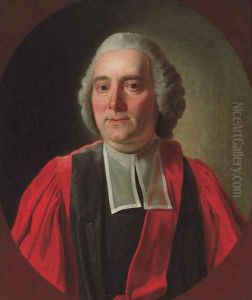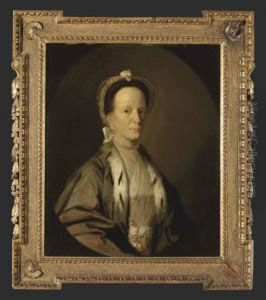Alan Ramsay Paintings
Allan Ramsay was a distinguished Scottish portrait painter, born on October 13, 1713, in Edinburgh, Scotland. He was the eldest son of Allan Ramsay, a poet and author of 'The Gentle Shepherd.' Ramsay's early education was in literature and poetry, under the guidance of his father, but his passion for art soon led him to pursue painting. He initially studied under the Swedish painter Hans Hysing in London and then furthered his education in Italy, where he was influenced by the works of the Old Masters and the contemporary Italian artists of his time.
Ramsay's career took a significant turn when he returned to London in the 1730s. He quickly established himself as a portrait painter among the British aristocracy. His portraits were known for their elegance and grace, capturing the intellectual and cultural refinement of his subjects. One of the hallmarks of Ramsay's work was his attention to the details of fabrics and clothing, reflecting the fashion and social status of his subjects. His skill in painting the textures of silk and satin made his portraits highly sought after.
In 1757, Ramsay was appointed Principal Painter in Ordinary to King George III, a position that significantly boosted his career. He produced numerous portraits of the royal family, including the iconic image of Queen Charlotte with her children. Ramsay's royal commissions cemented his reputation as one of the leading portrait painters in Britain. Despite his royal appointments, he continued to paint portraits of prominent Scottish figures and intellectuals, contributing to the documentation of the Enlightenment period in Scotland.
Beyond his artistic achievements, Ramsay was also involved in intellectual circles, counting among his friends some of the leading thinkers and writers of his time, such as David Hume and Voltaire. He was an advocate for the arts and played a role in the establishment of the Royal Society of Arts in London.
Ramsay's later years were marked by a decline in his health, which eventually led him to retire from painting in the early 1770s. He spent his final years in Italy, where he continued to engage with the cultural and intellectual scene until his death on August 10, 1784, in Dover, England. Allan Ramsay's legacy is not only in the beauty and elegance of his portraits but also in his contribution to the cultural and intellectual life of 18th-century Britain.

